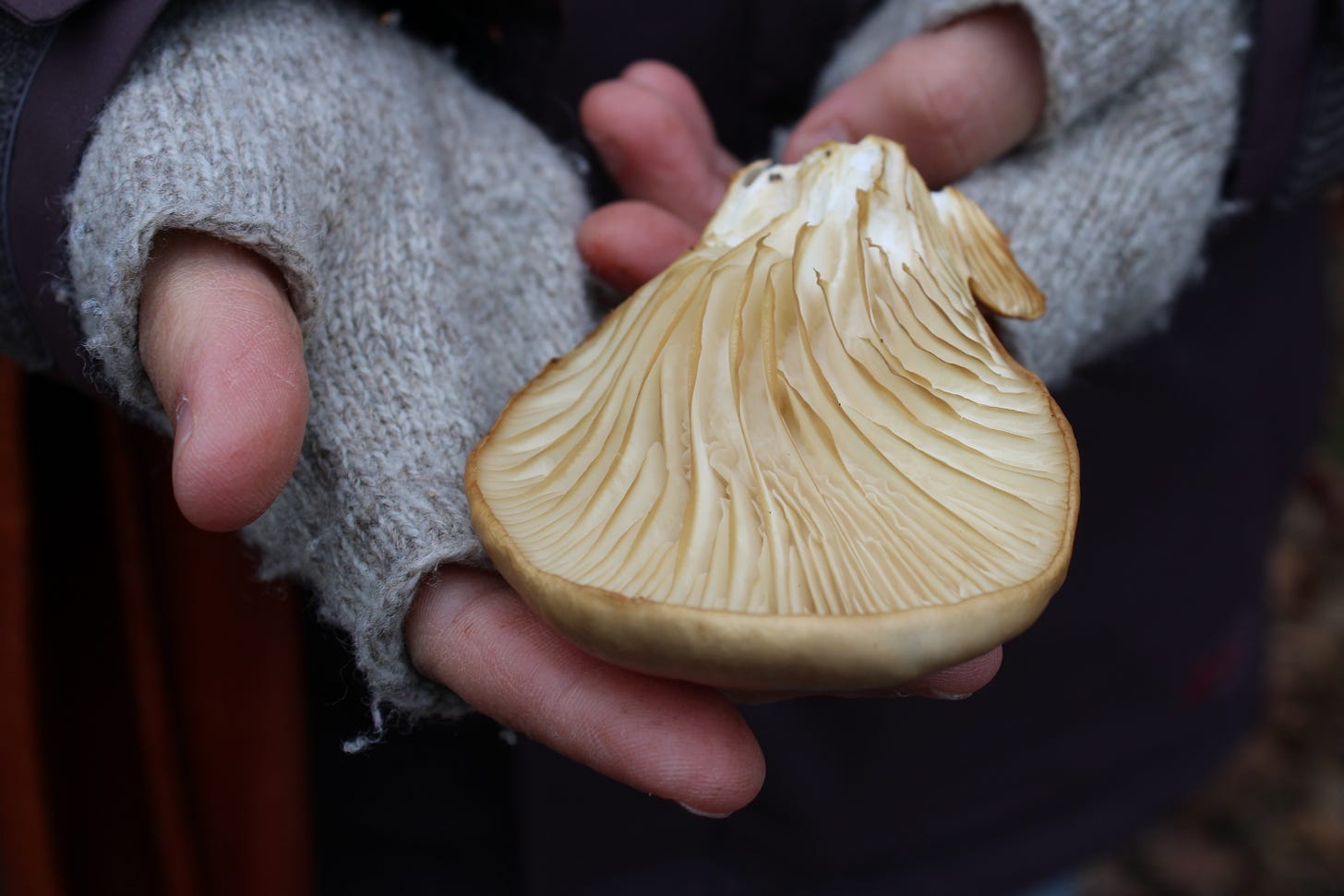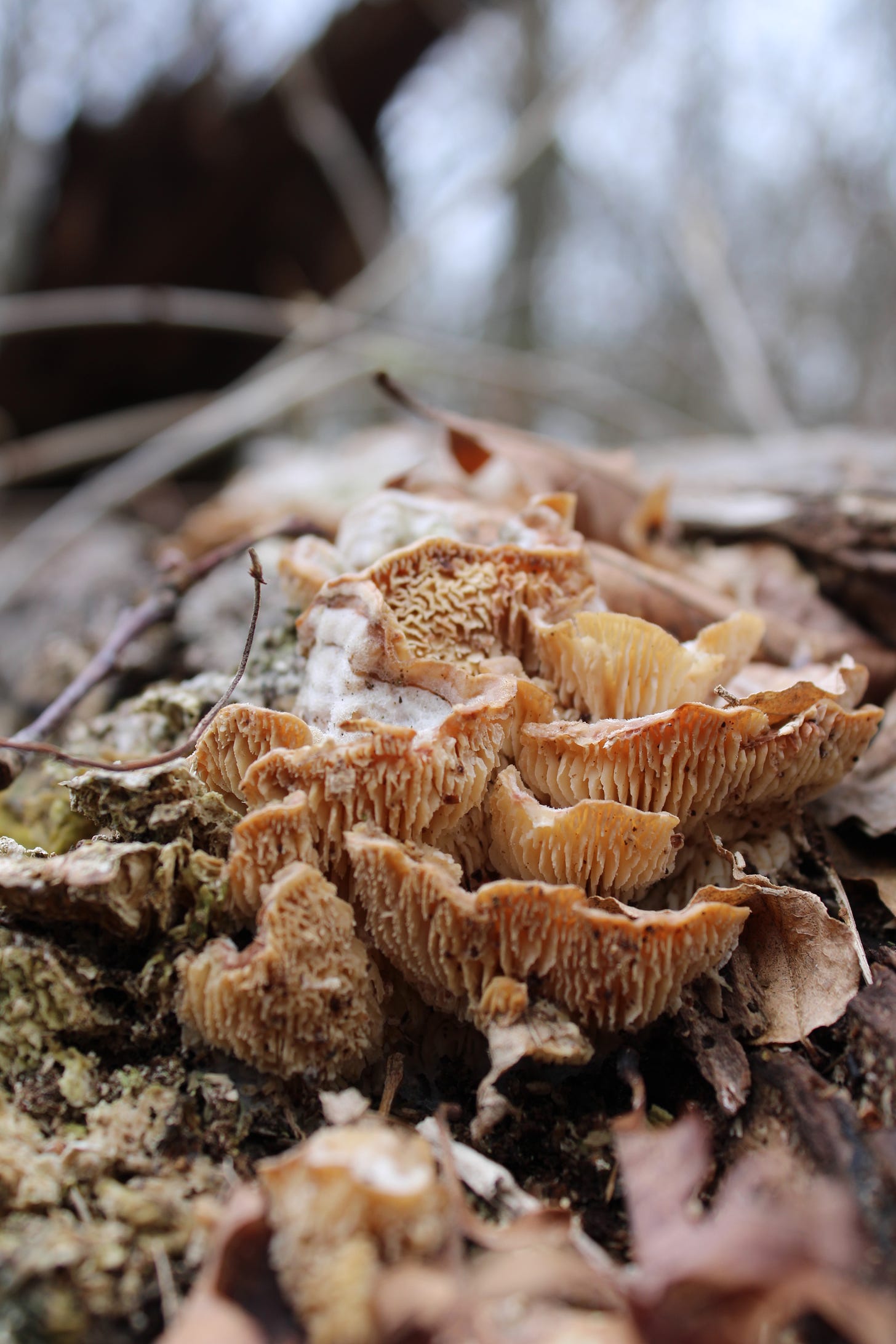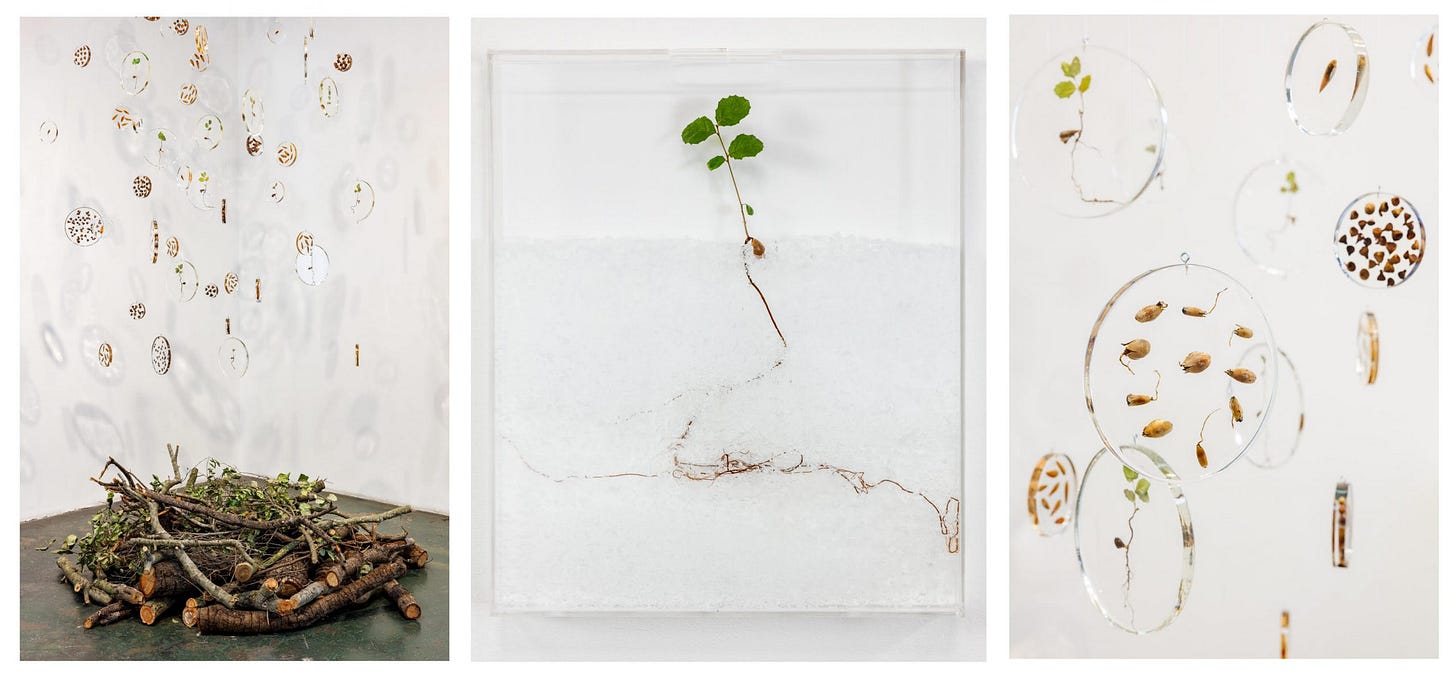Fungi are on the climate frontlines
Read about fungi's fascinating role in our warming future, my recent trip to Long Pond Park in Staten Island with The New York Mycological Society, and an artist who works with discarded materials.
Climate Fact: Climate change is producing higher 'divorce' rates among black-browed albatrosses.
Fungi are on the climate frontlines
The creativity of climate solutions ranges from carbon capture to edible plastic, but one effective carbon sponge making headlines is nature’s own. Fungi in all its various forms of yeasts, molds, and mushrooms has proved to be an incredible climate balm. Not only are they more sustainable than us, they might be just as smart.
Fungi include millions of species which generally prefer quiet shady spots at the base of trees or under rotting logs. The mushroom is essentially the apple or flower while the fungi form a massive underground network called mycelium. This miniature roots system has a symbolic relationship with surrounding plant life by feeding water and nutrients while providing structural support for growth. In every step we take in the forest, there are about 300 miles of mycelium working to keep the surrounding ecosystem alive and healthy!
Not only can fungi assist other plants through this interconnected relationship, but they allow trees to communicate with each other using chemical signaling. Long known as the “Wood Wide Web” growing research has suggested that plants can signal threats like insect attacks or droughts and send extra nutrients to trees in need through these networks of mycelium. Mom trees have also been shown to share excess carbon and nitrogen with their nearby saplings through the same process.
Fungi are also great at sequestering carbon. They help trees absorb CO2 while slowing down the process of decomposition which transforms carbon locked into the soil back into the atmosphere. While their role in the natural carbon cycle of our ecosystems is essential, fungi are showing sensitivity to temperature changes brought on by global warming.
Many fungi are already adapting in response to climate change and expanding into new geographic ranges. While seemingly little, changes in the world of fungi could have devastating implications to areas as big as agriculture, biodiversity and ecology, food safely, and even human health. There has also been an increased documentation of fungal pathogens related to climate change.
As we turn towards more nature-based solutions to address the climate crisis, learning from the incredible systems of fungi and mycelium may help us in the long run. For example, the remarkable ability of fungi to boost both growth and decomposition is currently being applied to agriculture. By seeding soils with “friendly fungus" farmers can naturally enhance their crops while also utilizing fungi as a sustainable alternative to chemical fertilizers. These fungal “biofertilizers” are an emerging field of development for sustainable farming practices.
There is still so much we don’t know about the world of fungi. Not only are they deeply entangled with the natural world, but research has shown that these networks of mycelium carry out intelligent processes like communication, learning, problem-solving, and even memory.
“I believe that mycelium is the neurological network of nature,” Paul Stamets, an American mycologist and author, has said. “Interlacing mosaics of mycelium infuse habitats with information-sharing membranes. These membranes are aware, react to change, and collectively have the long-term health of the host environment in mind.”
I don’t think mushrooms will take over the world anytime soon but next time you’re in the woods watch where you step!
The New York Mycological Society
With all this talk of fungi, of course I had to go see some for myself! This weekend I walked around Long Pond Park in Staten Island with The New York Mycological Society which holds walking tours at twenty two different parks in NYC every weekend year round. No need to be an experienced mycologists to join! Enjoy these cute little mushroom pictures and if you’re looking for some fungal fun, I definitely recommend joining a tour :)
Environmental artist highlight
Rebecca Youssef is an eco-artist who works with discarded materials. Her art forwards the importance of sustainable practices within the art world and showcase the beauty of “working with the planet … instead of taking from it.” Originally from the north shore of O’ahu, Hawaii, Youssef currently lives in Los Angeles, California. Her passion for conservation and native plants has inspired her efforts to restore native California oak trees. For every art piece she sells, she plants an oak sapling. Over the past ten years, her family has planted over 25,000 acorns in the Santa Monica Mountains.
“For as long as I can remember, I’ve had my hands in either dirt or paint,” Youssef has said. “I carry a deep respect for wild, untouched lands and hand-crafted art. My work finds a home in the space where art and environmentalism collide.”
For more of the artist’s work check out her website or her Instagram.
You can also read this interview for Los Angeles Magazine by my rockstar roommate Lauren Abunassar!
News update:
Great Thunberg was arrested by police while protesting a coal mine in Germany.
India may be the “most important country for the climate’s future.”
In one of the coldest corners of the world, temperatures are reaching 1000-year highs.
At the World Economic Forum in Davos, Switzerland tensions rose over the role of oil states in global decision-making on climate.
New York City trees are putting in work for the environment by absorbing up to 40 percent of human-produced carbon emissions.
In order to switch from fossil fuels to electric, we’re going to need more electricians.
The world’s oceans are breaking heat records.
A neighborhood program in Toronto is successfully helping reduce household carbon emissions. What about the rest of the country?
Renewables are projected to soon make up one-fourth of all US energy.
In Washington, the first state to fund climate change education in public schools, students are learning about food justice and taking part in mock G7 summits.
How effective is civil disobedience when protesting climate change?
Book Updates
This year I self-published two books of visual poetry with Tell Tell Poetry, an independent publishing service. Figures of Speech and beeing are now available for purchase on Lulu! With your purchase of beeing, 15% will be donated to the Women’s Earth Alliance, an organization that supports women developing solutions to climate change.
To purchase my books go to my website here!!
To learn more about Women’s Earth Alliance check out their website here!!
To follow the life of my little books follow @meryl.phair on Instagram!!
Thought food
“The task that we face today is to understand the language of nature.”
- Paul Stamets (American mycologist, entrepreneur, and author)










